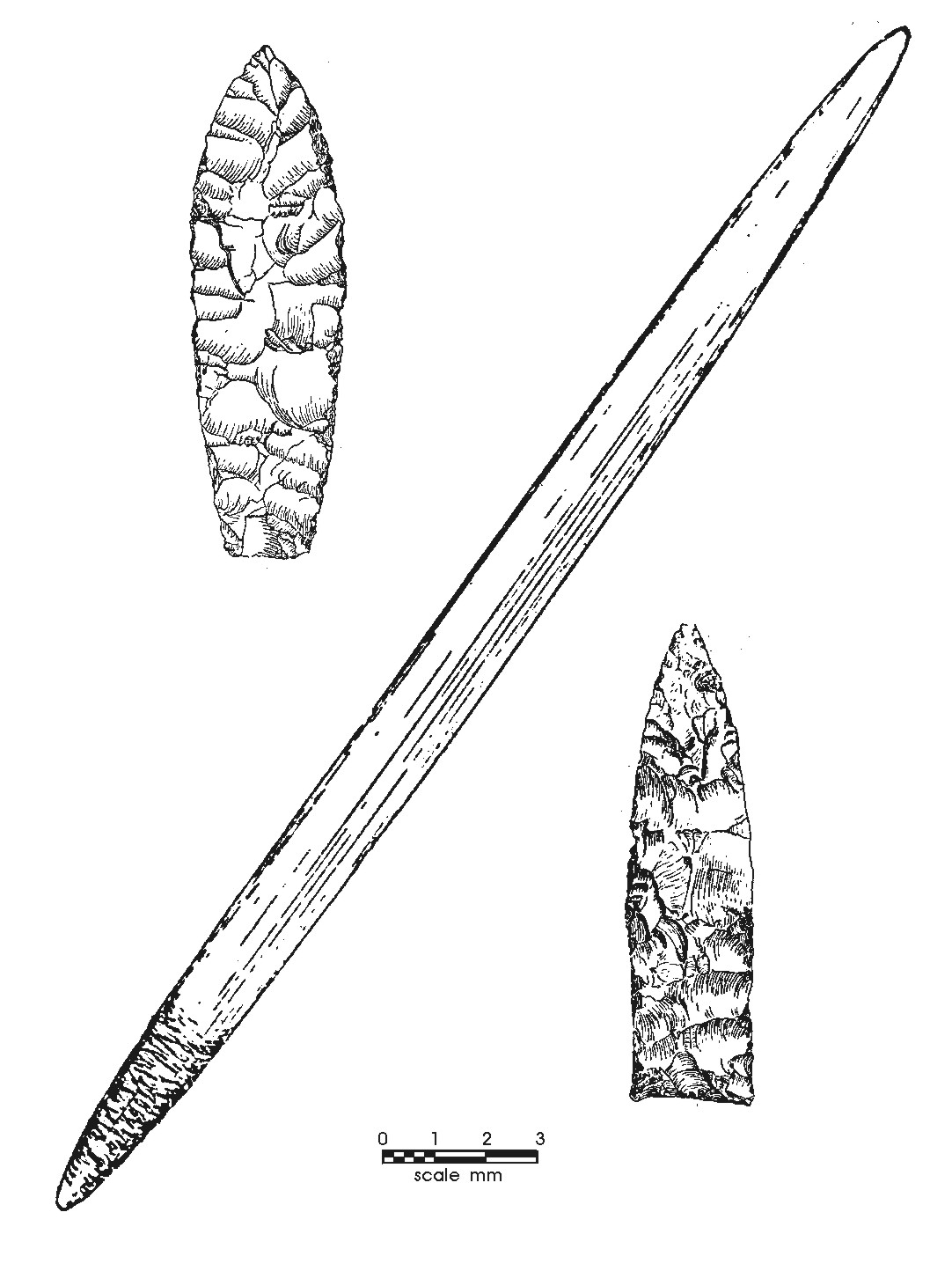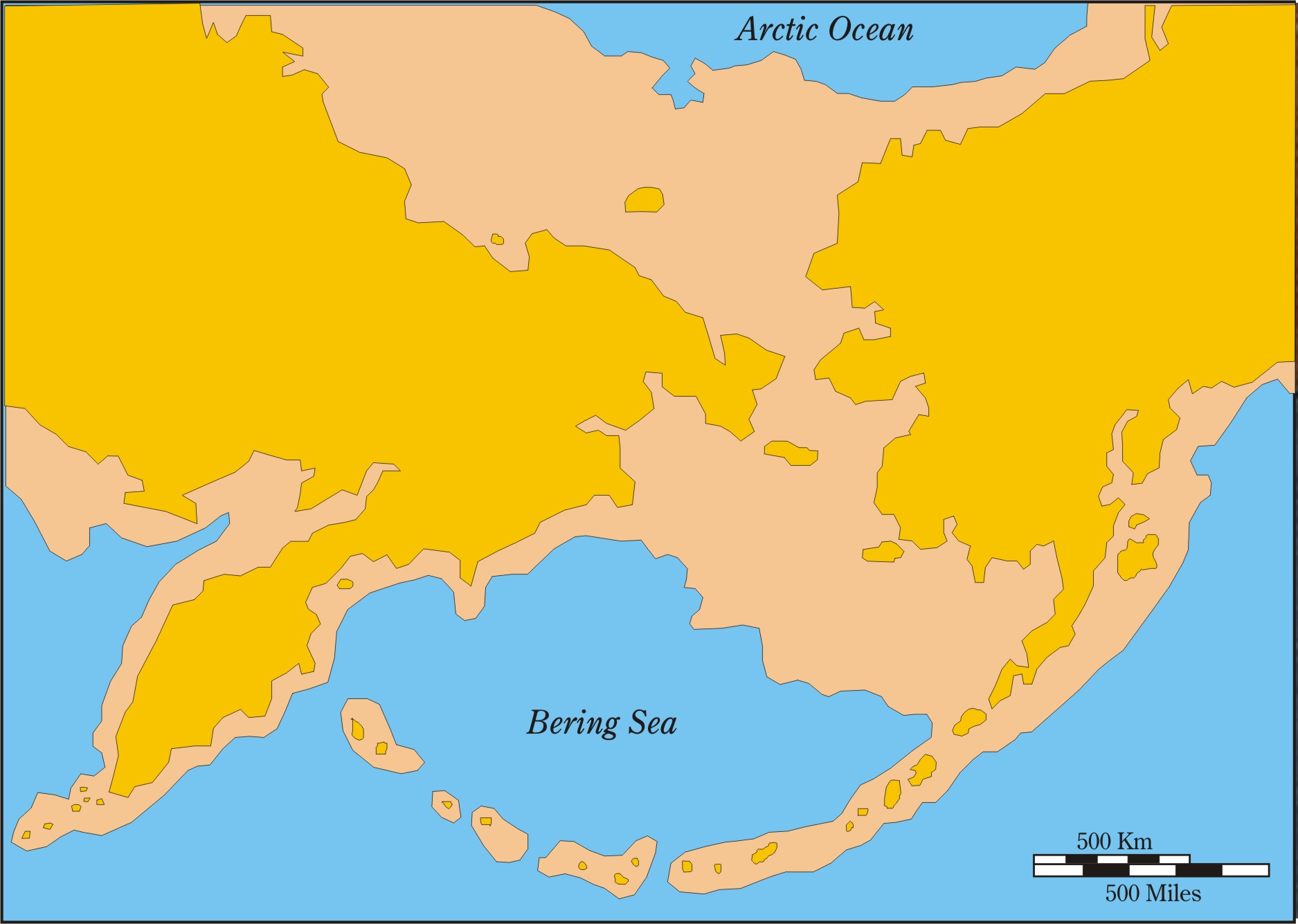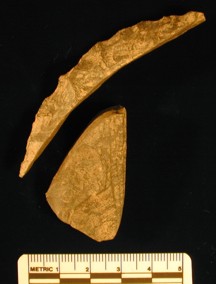Technology, Subsistence, and Settlement during the Pleistocene-Holocene Transition in Central Alaska POSTER SESSION, Society for American Archaeology, Denver, 03/21/02 |
Charles E. Holmes and Ben A. Potter
INTRODUCTION-- Recent theories of peopling of the North American continent have tended to emphasize coastal migration at the expense of the older interior Beringia model. There is clear evidence that the ubiquitous interior-based microblade technology at the close of the Pleistocene in Siberia extended into Alaska, representing the oldest archaeological complex recognized in eastern Beringia. This interior-based subsistence system appears to have been successful well into the Holocene in Interior Alaska.
CHRONOLOGY (ref. Radiocarbon Calibration Chart)-- Two components in the Tanana valley (Swan Point CZ4 and Broken Mammoth CZ4) are currently the earliest well dated occupations in Alaska. These sites were inhabited while the land bridge joining Siberia with Alaska existed. Radiocarbon dates for early Alaskan sites overlap with the Dyuktai Culture which occupied northeastern Siberia from >16,000 to c. 11,500 cal BP. Observe that Swan Point CZ4 and Broken Mammoth CZ4 pre-date Paleoindian complexes in central North America and the Nenana Complex in Alaska, which is about the same age as Clovis.
TECHNOLOGY --Technological similarities between the Dyuktai Culture and the interior Alaskan Denali Complex have long been recognized and inferred that Dyuktai people were the progenitors of the first Denali populations. These similarities are striking in the early Swan Point assemblage. Swan Point = Dyuktai in wedge shaped microblade core and microblade industry, dihedral burins, large and small bifaces, blades, and scrapers, as well as, reliance on a variety of prey species (e.g.,mammoth, large and small mammals, and birds. This basic microblade technology is at the core of many early Holocene and even later Holocene components. Although, new forms of bifacial points appear, as illustrated for Swan Point CZ3, Broken Mammoth CZ3, and Healy Lake, there are common styles widespread geographically and through time. We observe that microblade technology must have played a role in this technologically conservative system, because it continued little changed through various climatic and biotic oscillations and changes during the Pleistocene/Holocene transition. Much has been made of the Nenana Complex apparent lack of microblade technology. It is possible to postulate widespread technological diversification, both in Siberian and Alaskan cultures at the beginning of the Holocene. An easy explanation is that various tasks being performed by these groups led to more diverse tool kits, and, at the site level, appear spatially patterned. The absence of microblade technology in and of itself, does not imply that microblades were not used by site occupants. It has been pointed out that sampling bias may be a factor in the recovery of microblade technology. Functional explanations, perhaps relating to prey focus, seasonality, or distance to raw materials may be critical in exploring the distribution of microblade and non-microblade sites on the landscape. Later components in the Nenana valley, e.g., Carlo Creek and Eroadaway, lack microblades while others, Dry Creek CII and Panquinque Cr. CII have microblade technology. What is clear from the temporal span of microblade technology, is that the term "pre-microblade" is irrelevant. Given that microblades "re-appear" in the Nenana valley with Dry Creek CII and other components, there may be two possible explanations for the Nenana Complex. The Nenana Complex either (a) remained in the Nenana valley, but was short-lived and replaced by Denali populations, or (b) is not a viable entity, reflecting functional differences with other Denali components. Current interpretation of radiocarbon data indicates that Nenana Complex does not predate Clovis.
SUBSISTENCE (ref. Faunal Assemblage Chart) --The simplified faunal assemblage chart depicts data for well-dated sites in the Tanana and Nenana valleys, and includes data from Dyuktai Cave Levels VIIa and VIIb and Ushki 1 Level 6. The early Alaskan fauna (Swan Point CZ4 and Broken Mammoth CZ4 ) are similar to Dyuktai fauna and reflect broad-based, generalized hunting strategies that relied on large, medium, and small mammals, birds, and fish Broken Mammoth fauna. [Note: this links to an old article, but the overall pattern is relevant.] Aside from bison, which stand out as a common link among these early components, no single prey species seems to be more important than any other. However, the association of wapiti and bison during the Holocene is notable for Alaska, e.g., at Broken Mammoth CZ3, Dry Creek CI and Gerstle River CIII. It is not clear how the extinction of mammoth and horse affected subsistence, although it should be noted that the earliest components in Alaska have contemporaneous mammoth remains. The faunal record from an increasing number of Alaskan sites suggests that microblade technology may have been related to bison hunting, where reliance on bison enabled the Dyuktai/Denali populations to subsist in varying ecosystems. The idea of linking bison procurement with microblade technology, a concept introduced in 1982 as the "technological conservatism" model, appears supported.
MIGRATION-- Based on data presented here, it is abundantly clear that the first Alaskans were interior-based hunters, perhaps with a focus on bison, but included the hunting of birds, small mammals, wapiti, caribou, and moose, and catching fish (mostly salmonid). This subsistence model is difficult, if not impossible, to correlate with hypothetical coastal or marine oriented migrations occurring on the southern Pacific shores of Beringia. That is not to say that these migrations might not have occurred, merely to say that the Alaskan data do not support those hypotheses. (references)
return Home
Beringia
|
|---|
Swan Point microblade core and ridge spall.
|

Artifacts recovered during placer mining near Fairbanks (ref. Rainey 1939).
|
|

